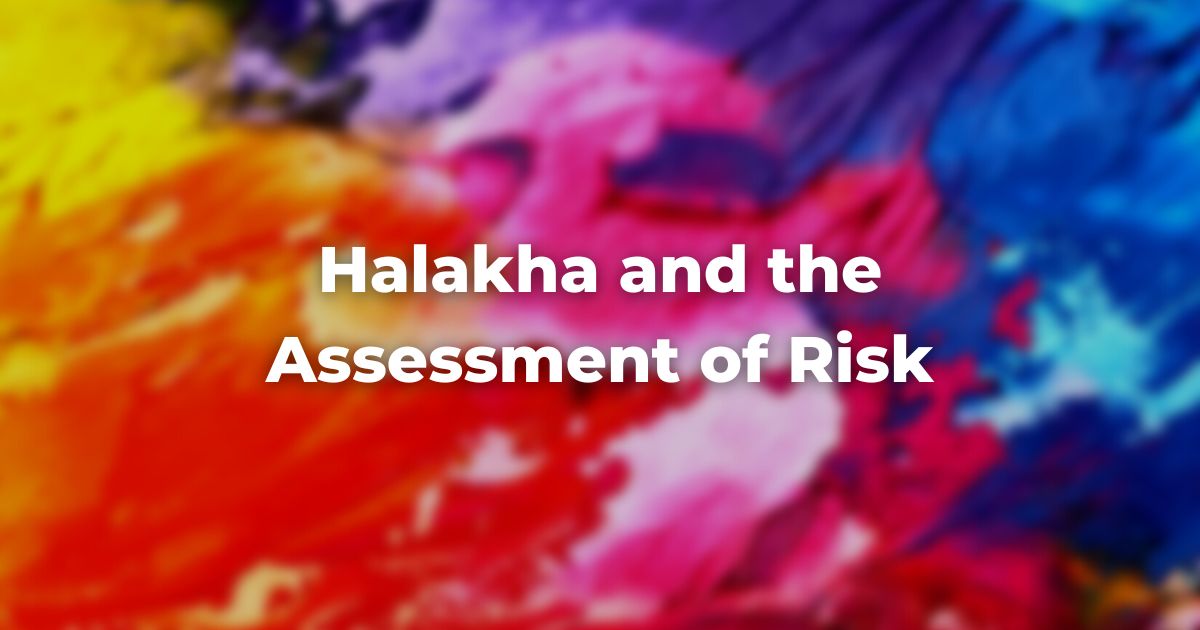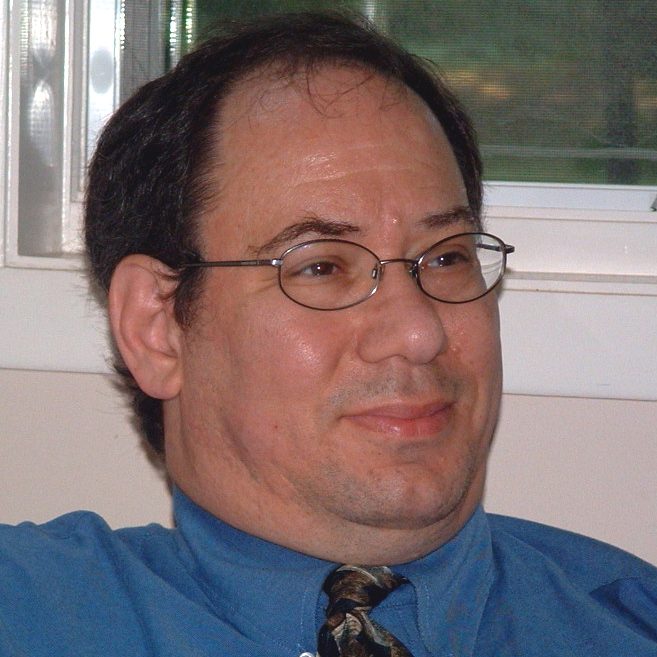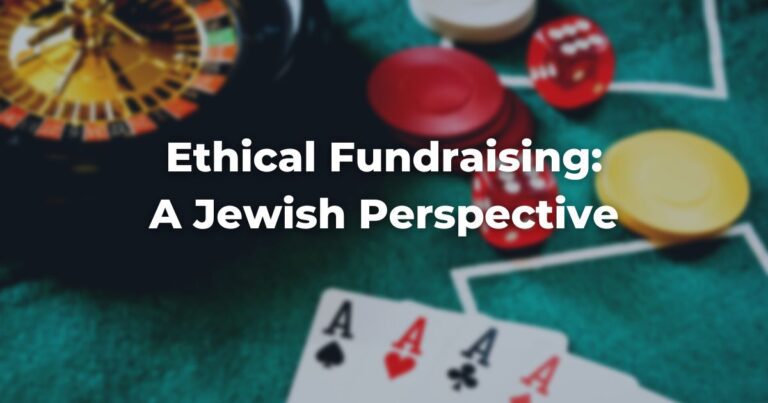Pikuach Nefesh Docheh Shabbat and Risk Assessment
There is a well-known halakhic principle that pikuach nefesh docheh shabbat, that the saving of life overrides the prohibitions of the Sabbath day.
That is what permits calling 911 or driving a heart attack victim to the hospital.
But much more than that, the principle extends to safek pikuach nefesh, a chance, a fear of potential loss of life, a doubt whether perhaps a life is in danger. Even such a risk to life overrides the prohibitions of Shabbat.
That is what permits calling the doctor or running to the hospital in the middle of the night when a child wakes you with croup, gasping for breath.
This is most likely a passing problem. But it might be life threatening in the rare, extreme case, and that is enough to set aside the restrictions of Shabbat. This also permits returning from the hospital on Shabbat after taking a patient. If we did not allow returning home, people may well hesitate to rush to the hospital and be stuck there for hours.
Somewhere, at the end of that calculus, there might be a patient endangered by the hesitation. This is what permits observant EMTs to take their shift in an ambulance on Shabbat—though every call that day might prove insignificant—because the ambulance service is seen to be necessary as a measure to protect against safek pikuach nefesh, the possibility of danger to life.
Indeed, aside from the question of how great is the risk that arises when confronting whether or not to transgress Shabbat, broadening the inquiry, the question of how great the risk comes up daily, for we are never to engage in activity that risks life, as is derived by the sages in many places from the warning to be careful with your lives articulated in Deuteronomy 4:9-15.
How Do Decide Risk?
But can that possibly mean any risk? Does every headache justify a panicked run to the emergency room, let alone on Shabbat?
The assessment of risk is thus often a halakhically relevant issue. People die in airline crashes—is it reasonable to refuse to fly? People die in traffic accidents, much more often—is it reasonable never to drive in a car? Never to cross the street? Perhaps these should be permitted as necessary activities. What about purely optional, recreational activities: rock-climbing, skiing, bungee-jumping, hang-gliding, parachute-jumping?
I like to describe this as “normal risk.”
We are all always engaged in activity with a certain amount of risk. It is the nature of life and is clearly permitted. It could hardly be otherwise.
How do we determine when we are exiting the realm of permitted risk and acting both foolishly and against the Torah’s warning?
Largely this distinction is intuitive.
Imagine a well-meaning person, reasonably brave, passing by a building that is on fire. Seeing a child at an upstairs window, they rush in to pull out the child. Uncertain if there are others in the building they run in again and bring out another victim. Perhaps yet again. But at some point they stop.
What was their calculation? That the risk had become unacceptable, or perhaps unacceptable weighed against the likelihood that there is another person trapped inside or that they could succeed in getting them out.
Acceptable risk had grown to become unacceptable.
The TalmudReferring to one of two collections, the Jerusalem and Babylonian Talmuds, edited in the 6th century, that contains hundreds of years of commentary, discussion, and exploration of the ideas in the Mishnah. One could describe it as Mishnah + Gemara = Talmud Read more refers in a few places to just that sort of measure of acceptable risk.
It rules that although there is risk in an activity, it is permissible if “many are doing it” (Shabbat 92b, Yevamot 12b, AvodahOriginally understood as Temple service, but expanded to mean any service to God.
Related to: gemilut hasadim. See Pirkei Avot 1:2 Read more Zarah 30b and elsewhere).
As more and more has been learned about the dangers of smoking, and as public smoking has decreased, that measure has featured in the discussion of whether smoking should be halakhically banned. How dangerous is it? Are reasonable people still smoking?
(See more: “Teshuvah Concerning Smoking,” Reuven Hammmer, 2020. The Conservative Movement’s Committee on Jewish Law and Standards formally pronounced a halakhic ban on smoking.)
The late Jerusalem Orthodox sage, Rabbi Solomon Zalman Auerbach (d. 1995) applied a similar measure to the matter of when Shabbat might be overridden.
If the danger is such that it arouses fear and that one would rush to attend to it on a weekday, that is sufficient risk to override Shabbat. But if the danger is such that on a weekday you might put off attending to it until later because you do not consider it urgent, then addressing it should await the end of Shabbat.
This matter of assessing risk also has a place in a halakhic discussion of whether to permit surgery or other risky treatments.
Here halakhah tries to balance the amount of benefit against the amount of risk. It derives that some risk is permitted in order to save a life from a Biblical story in II Kings chapter 7—starving lepers who chose to seek food in the enemy camp, though risking summary execution. “Why should we sit here waiting for death?” the lepers argue. “If they let us live we shall live. If they put us to death, we shall die.”
Putting Medical Expertise on the Subject of Risk
But Tosafot on Avodah Zarah 27b, writing in the thirteenth century, responds by limiting that risk: “In every case, we must do only that which is beneficial.”
And how can we know?
Here is where medical expertise steps in.
The medieval sage David ibn Abi Zimra (1479–1573; a Spanish born rabbi who served in Egypt), asked the assessment of risk questions in a case like our fire rescuer. How much risk should one undertake to save another?
His presentation: there are three categories of risk—leaning toward harm, balanced, and leading toward no harm. Where the situation leans toward harm to the rescuer, the act is forbidden; where it is balanced, action is optional (perhaps to be labeled pious); where it leans toward no risk, action is required. Since exact calculations of risk are never available, balanced, in ibn Abi Zimra’s formulation, must refer to a broad swath in the middle.
Again, assessing risk is not mathematical but intuitive: subject to expertise, assessment of potential benefit, and human predilections.
There is an area in halakhah where the assessment of risk comes closer to a mathematical notion of probability.
Surprisingly, perhaps, probability plays a role in judging matters of kashrut. Or perhaps this should not be surprising, for the concern of kashrut is for unkosher taste (the taste of something that is unkosher), and a basic principle is that of bittul b’shishim, that the presence of an unkosher particle in a mixture (unintentionally) may be disregarded if it constitutes less than one part in sixty of that mixture (1 ⅔ percent) because, asserts the halakhah, one could not taste such a small amount.
In concert with this theory, one cannot apply the principle of bittul b’shishim to strongly flavorful substances used regularly in small amounts to impart their flavor, such as certain spices (a principle known as avidi l’ta’ama).
Double Doubting the Risk
A lesser-known concept in kashrut is the concept of s’feik s’feika, a double doubt.
This comes close to a mathematical consideration of the probability of the risk of unkosher food being present. A single safeik, a single doubt, in this formulation, refers to an uncertainty about the kashrut of the item before us.
It is formally considered a fifty-fifty uncertainty. We do not know if the item is or is not kosher. As such we cannot eat that item on account of that doubt. If, however, an unconnected, uncorrelated uncertainty exists with regard to whether the food we think may be unkosher may actually be kosher (a double doubt) then we may proceed on that assumption and eat it.
An example is in order.
Assessment of the Risk of Kashrut
Let us posit that you live in a shared household, some of whose members keep kosher and some do not, and each group keeps its own utensils properly marked for its own use.
You discover some rice in a glass dish in the refrigerator and do not know if it had been prepared in a kosher pot or an equally available unkosher one.
First impression would be that one may not eat it. And that impression would be correct given an analysis that takes into account this single doubt. But there is a second doubt to be applied. Technically, a pot only conveys its nature for 24 hours after each use. After that, food prepared in it is unaffected by the pot.
Had the pot in which that rice was prepared been used recently, or had it not been used in days? If it had not been used recently, it does not matter what pot it was prepared in.
In that case, one may rely on the double doubt to eat the rice.
In this case of double doubt, there is a 50 percent chance that the item is kosher, but even with regard to the 50 percent chance where we were concerned that it might be unkosher—in half of those cases (25 percent) it is actually kosher and only in the other half (25 percent) is it truly unkosher.
Thus where there is a cumulative 75 percent chance that the item is kosher and only a 25 percent chance that it is not, we may rely on the kashrut of the item.
Now, for the record, we would not generally suggest you should eat that rice except in an unusual and exigent circumstance. Better to see if you can find out who prepared it, or go ahead and make new rice.
But we might well cite the double doubt after the fact to assuage any lingering guilt you might have about having eaten the rice without thinking.
But where the doubts are not balanced, say the first doubt is weighted 80-20 toward the item being kosher (there are 4 out of 5 chances that it is kosher) and the second again 80-20 against the item being unkosher (most probably not unkosher), that would yield a 96 percent likelihood of kashrut and only a 4 percent chance that it is not.
That is a s’feik s’feika that might be used.
In a world full of uncertainty, assessment of risk plays a vital role in halakhic debates.
**The calculation used: The first doubt, being 80-20 in favor of the conclusion that the food before you is kosher, yields 80 percent likelihood of kosher. With regard to the latter 20 percent where there is reason to doubt its kashrut, 80 percent of those are actually kosher, i.e. 80 percent of the remaining 20 percent = 16 percent are themselves likely kosher. Add the 80 percent that are kosher by the first measure and another 16 percent that are kosher by the second measure, and a full 96 percent are likely kosher, and one’s cumulative doubt that it may really be unkosher is only the remaining 4 percent chance.
Author
-

Rabbi Avram Israel Reisner is rabbi emeritus at Chevrei Tzedek Congregation in Baltimore, MD. He is a long-standing member of the Conservative Movement's Committee on Jewish Law and Standards. He earned a PhD in Talmud at JTSA and an MA in Bioethics at the University of Pennsylvania and serves as an appointee on the Maryland Stem Cell Research Commission. He is the author, most recently, of a teshuvah on eating at vegetarian restaurants and co-author of one on the mitzvah of sustainability. He has authored other significant teshuvot on End-of-Life Treatment, Genetically Modified Food and Forming a Minyan Over the Internet, and is a co-author of the landmark teshuvah permitting same-sex marriage.
View all posts






